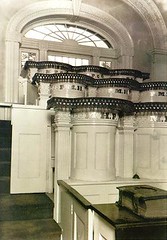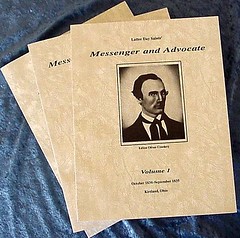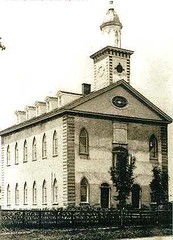Mormon Roots In San Bernardino
Dozens of religious ceremonies take place at the Redlands California Temple any given week. On Friday, multiple wedding parties passed through, one after another.The loved ones of the brides and grooms arrived and filed in, just as at any other wedding. But a ceremony at a Mormon temple is a more exclusive gathering than normal. Each guest had to present a small card to the elder at the front door, proving they had the right to attend. These cards say not only that the guest is a Latter-day Saint, but that the guest has lived a moral life and has the recommendation of church leaders to visit the temple. Religion is by its nature an inclusive thing, but the Mormon faith has more provisions to meet than other faiths. As a result, it has been viewed by many outsiders as cultish or bizarre.
On living correctly:
"We try to live correctly all the time, not just some of the time," said Richard Avery, a 74-year-old Mormon from Moreno Valley. "I'm not saying other people don't, but we all try to govern our lives as if it could all be over at any second."
On San Bernardino's Mormon heritage:
A Mormon colony was founded in San Bernardino in 1851. Brigham Young, then church president, was trying to establish Mormon refuges, and the climate and proximity to the coast made the Inland Empire an attractive locale. The Rancho San Bernardino was purchased and the city of San Bernardino was incorporated in 1854. One of Young's disciples, Amasa M. Lyman, became the first mayor. Young would eventually recall the Mormons back to Salt Lake City before the end of the decade, but the effects of the civilization on the area were lasting. The Cajon Pass was cut, and the lumber business was started in Crestline. "The Mormons really opened up much of Southern California to the east," said Kasey Haws, one of the counselors for the Redlands temple of the church. California today is now home to some 800,000 Latter-day Saints. Utah is the only state with more. On Temple work for the dead: And when someone is baptized within the Mormon church, Connell said the opportunity is there to redeem the souls of ancestors who were not part of the faith. The ceremonies are called sealings within the church because they are actions with ramifications extending into eternity and well beyond the reaches of this earthly existence. "We connect through antiquity to our ancestors, and allow a proxy sealing for them as well," Connell said. That permanence, in this world and the next, is why members of the church so desire the blessing of their elders on the events in their lives. Nice article.







2 Comments:
The article's author calls the Massachusetts Governor "Mitt Money." What a delicious error!
Well . . . . money's not too far off though eh? :-)
Post a Comment
<< Home